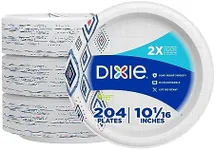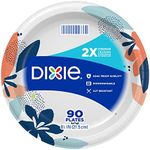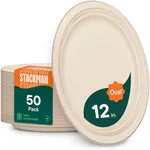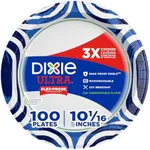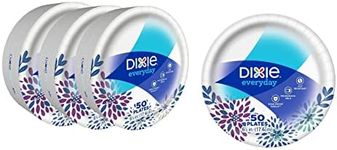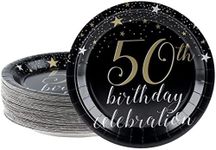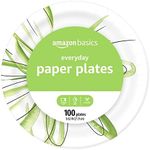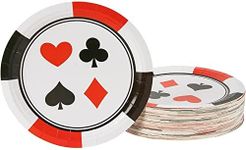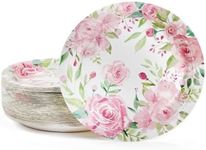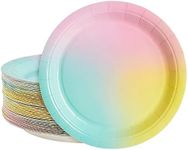Buying Guide for the Best Disposable Plates
Choosing the right disposable plates can make a big difference in your event or daily use. Whether you're hosting a party, going on a picnic, or just want an easy cleanup option for meals, there are several factors to consider to ensure you pick the best disposable plates for your needs. Here are some key specifications to help you make an informed decision.MaterialThe material of disposable plates is crucial as it affects durability, environmental impact, and suitability for different types of food. Common materials include paper, plastic, and biodegradable options like bamboo or palm leaves. Paper plates are lightweight and often more eco-friendly, but they may not hold up well with heavy or greasy foods. Plastic plates are sturdier and can handle a variety of foods, but they are less environmentally friendly. Biodegradable plates are a great eco-friendly option and can be quite durable, but they may be more expensive. Choose based on the type of food you'll be serving and your environmental preferences.
SizeThe size of the disposable plates you choose should match the type of meal you plan to serve. Plates typically range from small (6-7 inches) for appetizers or desserts, to medium (8-9 inches) for standard meals, to large (10-12 inches) for full dinners or buffet-style servings. Consider the portion sizes and the type of food to determine the appropriate size. For example, a larger plate is better for a main course, while a smaller plate is suitable for snacks or desserts.
Strength and DurabilityStrength and durability are important to ensure the plates can hold the food without bending or breaking. This is especially important for heavier or wetter foods. Plates are often labeled as light, medium, or heavy-duty. Light-duty plates are suitable for dry, lightweight foods like sandwiches or chips. Medium-duty plates can handle a bit more weight and moisture, making them good for salads or pasta. Heavy-duty plates are the best choice for meals with substantial portions or foods with sauces and gravies. Consider the type of food and the setting to choose the right strength.
Design and AestheticsThe design and aesthetics of disposable plates can enhance the overall presentation of your meal or event. Plates come in various colors, patterns, and finishes. For formal events, you might prefer elegant designs with a glossy finish, while casual gatherings might call for fun, colorful patterns. Consider the theme of your event or your personal style when choosing the design. Additionally, some plates have compartments, which can be useful for keeping different foods separate.
Environmental ImpactThe environmental impact of disposable plates is an important consideration, especially if you are environmentally conscious. Look for plates that are made from recycled materials or are biodegradable and compostable. These options help reduce waste and are better for the environment. Avoid plates with excessive plastic or non-recyclable materials if you want to minimize your ecological footprint. Consider how the plates will be disposed of after use and choose options that align with your environmental values.
Cost per PlateThe cost per plate can vary widely depending on the material, size, and design. While it might be tempting to go for the cheapest option, consider the balance between cost and quality. Higher-quality plates might be more expensive, but they can offer better durability and a more pleasant dining experience. Calculate the cost per plate and compare it with the features and benefits to determine the best value for your needs. Think about the quantity you need and whether buying in bulk could offer savings.

